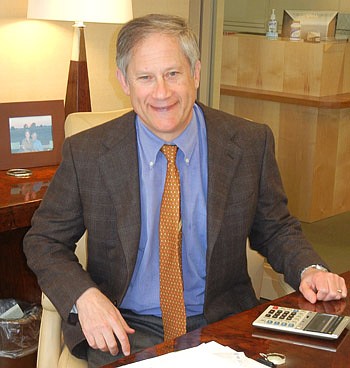
Regency Centers Corp. improved its operations in 2011. However, Chairman and CEO Martin “Hap” Stein said he thinks the Jacksonville-based shopping center developer can do better.
“I am extremely gratified by the progress in every aspect of our business,” Stein told shareholders at Regency’s annual meeting Tuesday at The River Club.
“Despite the progress that I just reviewed, we still expect more,” he said.
The progress included increasing the occupancy of Regency’s operating portfolio from 92.8 percent at the end of 2010 to 93.5 percent as of Dec. 31, 2011.
But Regency, which owns 217 shopping centers in 24 states and has partial ownership interests in 147 other centers, has a goal of returning occupancy to 95 percent.
The company is hoping that increased leasing activity by small shops and retailers will boost those occupancy rates higher.
President and Chief Operating Officer Brian Smith said occupancy for spaces of more than 10,000 square feet is 99 percent, but the rate for space below that size is only 86 percent. Regency’s goal is to move the small-shop occupancy up to 90 percent, he said.
Stein said after the meeting that an improving economy is increasing activity by smaller retailers.
“Demand for space and the leasing activity is above and beyond levels we’ve seen in the past,” he said.
Stein also said the level of bad debts by poor performing small retailers is “below pre-recession levels.”
Another goal for Regency is better growth in net operating income from existing properties. Its same-property net operating income, excluding termination fees, rose by only 0.1 percent last year, and the company is targeting 3 percent growth annually.
Stein also said that Regency’s shareholder return, which has consistently outperformed its peer group for the past decade and before, was below the peer group average last year, and the company expects that to improve.
The total shareholder return, which is the increase or decrease in the stock price plus dividends paid out during the year, fell by 7 percent last year.
Some of the steps Regency took in 2011 to improve future performance included $95 million of new developments, $110 million in acquisitions and the sale of $90 million in “non-core” properties.
The company also strengthened its balance sheet by renewing a $600 million credit line and closing on a $250 million loan to refinance near-term maturing debt. But Smith said Regency’s balance sheet already was in good shape when the economy went bad.
“Our strong balance sheet got us through the dark days of 2009,” he said.
“The building blocks are in place,” Stein said. “I really like how well-positioned Regency is.”
356-2466